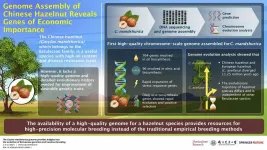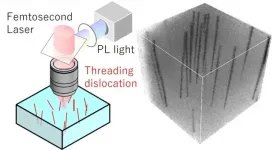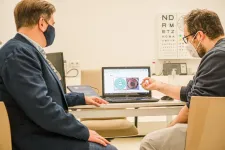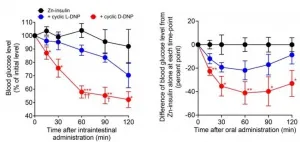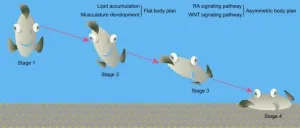(Press-News.org) With climate change looming, what must people hear to convince them to change their ways to stop harming the environment? A new Johns Hopkins University study finds stories to be significantly more motivating than scientific facts-- at least for some people.
After hearing a compelling pollution-related story in which a man died, the average person paid more for green products than after having heard scientific facts about water pollution. But the average person in the study was a Democrat. Republicans paid less after hearing the story rather than the simple facts.
The findings, published this week in the journal One Earth, suggest message framing makes a real difference in people's actions toward the environment. It also suggests there is no monolithic best way to motivate people and policymakers must work harder to tailor messages for specific audiences.
"Our findings suggest the power of storytelling may be more like preaching to the choir," said co-author Paul J. Ferraro, an evidence-based environmental policy expert and the Bloomberg Distinguished Professor of Human Behavior and Public Policy at Johns Hopkins.
"For those who are not already leaning toward environmental action, stories might actually make things worse."
Scientists have little scientific evidence to guide them on how best to communicate with the public about environmental threats. Increasingly, scientists have been encouraged to leave their factual comfort zones and tell more stories that connect with people personally and emotionally. But scientists are reluctant to tell such stories because, for example, no one can point to a deadly flood or a forest fire and conclusively say that the deaths were caused by climate change.
The question researchers hoped to answer with this study: Does storytelling really work to change people's behavior? And if so, for whom does it work best?
"We said let's do a horserace between a story and a more typical science-based message and see what actually matters for purchasing behavior," Ferraro said.
Researchers conducted a field experiment involving just over 1,200 people at an agricultural event in Delaware. Everyone surveyed had lawns or gardens and lived in watershed known to be polluted.
Through a random-price auction, researchers attempted to measure how much participants were willing to pay for products that reduce nutrient pollution. Before people could buy the products, they watched a video with either scientific facts or story about nutrient pollution.
In the story group, participants viewed a true story about a local man's death that had plausible but tenuous connections to nutrient pollution: he died after eating contaminated shellfish. In the scientific facts group, participants viewed an evidence-based description of the impacts of nutrient pollution on ecosystems and surrounding communities.
After watching the videos, all participants had a chance to purchase products costing less than $10 that could reduce storm water runoff: fertilizer, soil test kits, biochar and soaker hoses.
People who heard the story were on average willing to pay more than those who heard the straight science. But the results skewed greatly when broken down by political party. The story made liberals 17 percent more willing to buy the products, while making conservatives want to spend 14 percent less.
The deep behavioral divide along party lines surprised Ferraro, who typically sees little difference in behavior between Democrats and Republicans when it comes to matters such as energy conservation.
"We hope this study stimulates more work about how to communicate the urgency of climate change and other global environmental challenges," said lead author Hilary Byerly, a postdoctoral associate at the University of Colorado. "Should the messages come from scientists? And what is it about this type of story that provokes environmental action from Democrats but turns off Republicans?"
INFORMATION:
Authors included: Tongzhe Li of University of Guelph in Ontario, Canada; Kent D. Messer of University of Delaware; and Collin Weigel of Johns Hopkins.
This research was supported by contributions from the Penn Foundation, the US Department of Agriculture, The Nature Conservancy, and the National Science Foundation.
Humans have been breeding plants for their economic value for thousands of years. Traditionally, plant breeding techniques included cumbersome and time-consuming techniques like grafting and hybridization to enhance traits of economic value like disease resistance and high nutrition content. Now, with the ability to edit plant DNA using revolutionary gene-editing tools, particularly the CRISPR-Cas9 system, it is possible to enhance traits of economic value in plants easily and more efficiently than by using traditional techniques. But for that, it is necessary to sequence whole ...
Osaka - Gallium nitride (GaN) is a semiconductor material whose wide band gap may one day lead to it superseding silicon in electronics applications. It is therefore important to have GaN characterization techniques that are able to support the development of GaN devices. Researchers at Osaka University have reported a nondestructive method for characterizing the crystalline quality of GaN. Their findings were published in Applied Physics Express.
GaN power switching devices offer numerous advantages including high-speed switching, high-power operation, low on-resistance, and high breakdown voltage. To take advantage of these properties, the defect density of GaN crystals must be low.
Threading dislocations ...
The various methods that Netflix employs when premiering its content favour the international success of original local productions and, at the same time, act as a safety net for these films in an audiovisual industry in constant evolution.
A study conducted by Universitat Oberta de Catalunya (UOC) researchers Antoni Roig, Judith Clares and Jordi Sánchez, published in the open access journal Communication & Society, has analysed the various systems and schedules implemented by the American entertainment platform in recent years in relation to its original feature films, which have allowed it to become the leader in the distribution of on-demand audiovisual content.
According to the authors, the approaches adopted by Netflix form part of a global expansion plan to consolidate ...
A new study has found Australia's government-owned airports could produce enough electricity to power 136,000 homes, if they had large-scale rooftop solar systems installed.
Researchers at RMIT University compared electricity generated by residential solar panels in a regional Australian city to the potential green energy production of 21 leased federal airports.
They found if large-scale solar panels were installed at the airports, they would generate 10 times more electricity than the city's 17,000 residential panels, while offsetting 151.6 kilotons of greenhouse gasses annually.
Researcher Dr Chayn Sun said the analysis showed the value ...
As a result of the work of five years of research, they have created the first trifocal corneal inlay that is also fully transparent. Such an inlay would allow good eyesight to presbyopic people of objects located at several distances: far, intermediate (computer, mobile devices) and near. Their work has been published in Nature group's Scientific Reports journal.
"This inlay could be an alternative for those suffering from presbyopia who would rather not use glasses or contact lenses. Furthermore, it would be fully compatible with laser refractive surgery in myopic and hyperopic patients, as well as possible subsequent cataract interventions. We are suggesting something totally new that is also not ...
Researchers from Kumamoto University, Japan have found that DNP peptide, a small intestine-permeable cyclic peptide originally used as an insulin additive to improve absorption into the small intestinal, lowers blood glucose levels in mice. They also found that insulin can be administered orally by simply adding D-form DNP peptide (D-DNP) peptide to injectable insulin used in clinical practice. This study is expected to provide a basis for the development of oral insulin using DNP peptides.
Insulin therapy by self-injected insulin is currently the best way to control ...
Narcolepsy with cataplexy, or narcolepsy type 1 (NT1), is a rare and chronic neurological disease whose prevalence increased in children and adolescents after the administration of Pandemrix swine flu vaccine in 2009-2010. It is an autoimmune disease to which a specific inherited tissue type (HLA-DQB1*0602) predisposes people.
The disease mechanism of NT1 was investigated in a collaborative study carried out by PhD student Arja Vuorela and university researcher Dr. Tobias Freitag, working in the research groups of Prof. Outi Vaarala and Prof. Seppo Meri. The study analyzed the cell-mediated immune response targeting ...
The colonization of the seafloor is one of the most important events in evolutionary history, leading to an explosive radiation and large-scale morphological diversification of marine phyla. Flatfishes are one of the most successful groups of seafloor colonizers and have evolved the most specialized body plan (i.e., flat and asymmetrical) among the teleosts. However, the origin and formation mechanism of the peculiar morphology of flatfishes had long been unclear.
Now, researchers from the Kunming Institute of Zoology of the Chinese Academy of Sciences ...
Announcing a new article publication for BIO Integration journal. In this mini review article the authors Meiyu Qiu and Pei Li from Korea Advanced Institute of Science and Technology (KAIST), Daejeon, Republic of Korea summarize CRISPR/Cas-based Diagnostics and Gene Therapy.
Clustered regularly interspaced short palindromic repeats (CRISPR) technology, an easy, rapid, cost-effective, and precise gene-editing technique, has revolutionized diagnostics and gene therapy. Fast and accurate diagnosis of diseases is essential for point-of-care-testing (POCT) and specialized medical institutes. The CRISPR-associated (Cas) proteins system shed light on the new diagnostics methods at point-of-care (POC) owning to its advantages. In addition, CRISPR/Cas-based gene-editing ...
People's ability to perceive speech sounds has been deeply studied, specially during someone's first year of life, but what happens during the first hours after birth? Are babies born with innate abilities to perceive speech sounds, or do neural encoding processes need to age for some time?
Researchers from the Institute of Neurosciences of the University of Barcelona (UBNeuro) and the Sant Joan de Déu Research Institute (IRSJD) have created a new methodology to try to answer this basic question on human development.
The results, published in the Nature's open-access journal Scientific Reports, ...

